- The first case of novel coronavirus was reported in Wuhan, China, in late December.
- The virus has since infected roughly 5.2 million people around the world and killed more than 335,000.
- It also spread to at least 185 countries and regions around the world in nearly five months.
- Here is a timeline of some of the most significant events and moments of the pandemic.
- Visit Business Insider’s homepage for more stories.
December 31, 2019: Chinese Health officials informed the World Health Organization about a cluster of 41 patients with a mysterious pneumonia. Most were connected to the Huanan Seafood Wholesale Market, a wet market in the city of Wuhan.
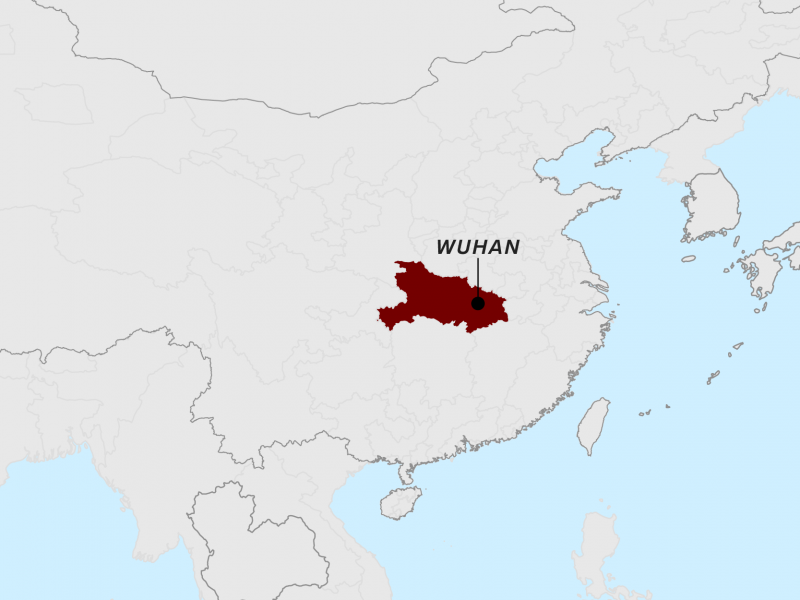
Though the first 41 cases were reported December 31, some reporting suggests the virus could have started spreading as early as late November. The large gathering of people at the market may simply have boosted the transmission.
Researchers think the coronavirus originated in bats, then jumped to an intermediary species that passed it to people. It can be spread among humans via respiratory droplets within 6 feet. The virus can also survive for days on some surfaces.
Its pneumonia-like symptoms include fever and coughing.
January 1, 2020: Chinese authorities closed the Huanan Seafood Wholesale Market.

Wuhan authorities banned the trade of live animals at wet markets soon after the first cases were confirmed. China has also banned the buying, selling, and transportation of wild animals in markets, restaurants, and online marketplaces across the country.
January 7: Chinese authorities identified the virus that caused the illness as a new type of coronavirus.

Other viruses in the coronavirus family cause the common cold, pneumonia, and SARS.
January 11: China recorded its first death linked to the novel coronavirus.
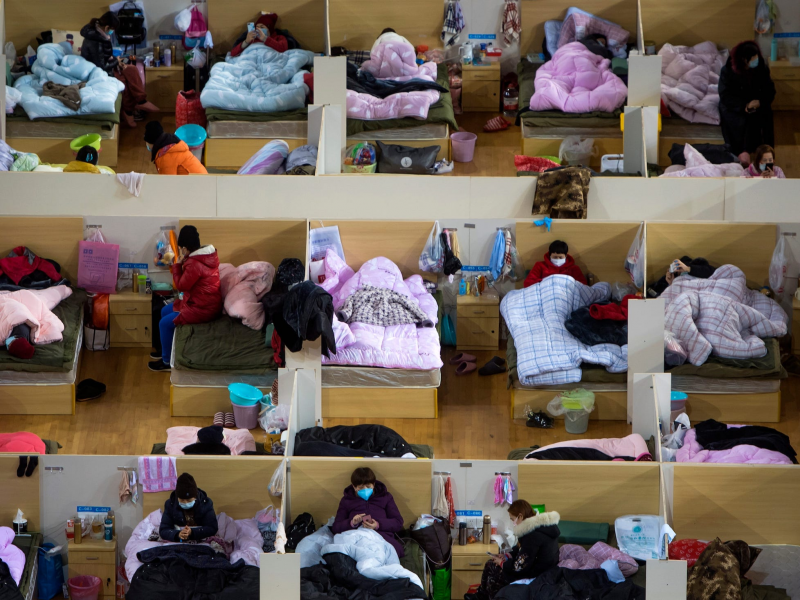
The first person to die was a 61-year-old man who was a frequent customer at the Huanan market.
January 13: The first coronavirus case outside China was reported in Thailand.

A 61-year-old female tourist in Thailand was diagnosed on January 13. She'd recently spent time in Wuhan. Airports in Hong Kong, Singapore, Thailand, and South Korea also began to screen passengers for fever.
January 20: The first US case was reported: a 35-year-old man in Snohomish County, Washington.
The man left Wuhan and landed at the Seattle-Tacoma International Airport on January 15. Though he initially showed no symptoms, he reported to an urgent care clinic with symptoms of pneumonia on January 19. He was diagnosed with the virus a day later.
January 23: Chinese authorities placed the 11-million-person city of Wuhan under quarantine, and the rest of the Hubei province days later.
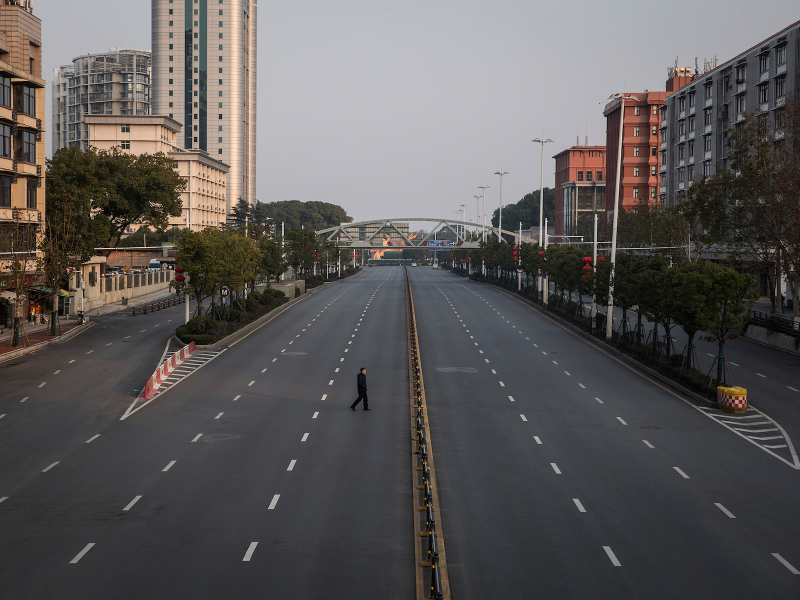
The Hubei lockdowns affected an estimated 60 million people, making China's action the largest quarantine in history.
January 30: The WHO declared a "public-health emergency of international concern."

The WHO's determination of "global public-health emergency" has been around since 2005 and had been used five times before.
Those instances were the Ebola outbreak that started in 2013 in West Africa, another one that's been ongoing in the Democratic Republic of Congo since 2018, the 2016 Zika epidemic, polio emerging in war zones in 2014, and the swine-flu pandemic in 2009.
January 31: President Trump banned foreign nationals from entering the US if they had been in China within the prior two weeks.

February 2: The first coronavirus death outside of China was recorded in the Philippines.
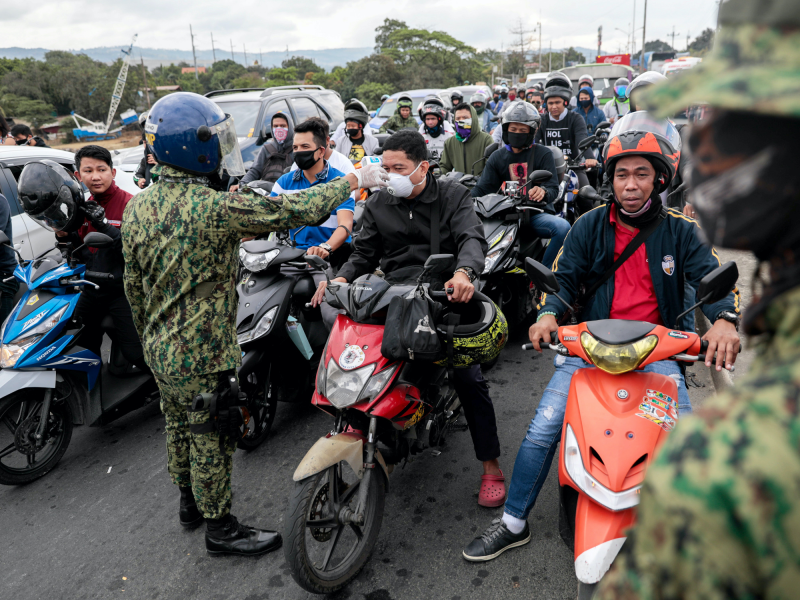
February 6: A person in California died from COVID-19, the first known American death.
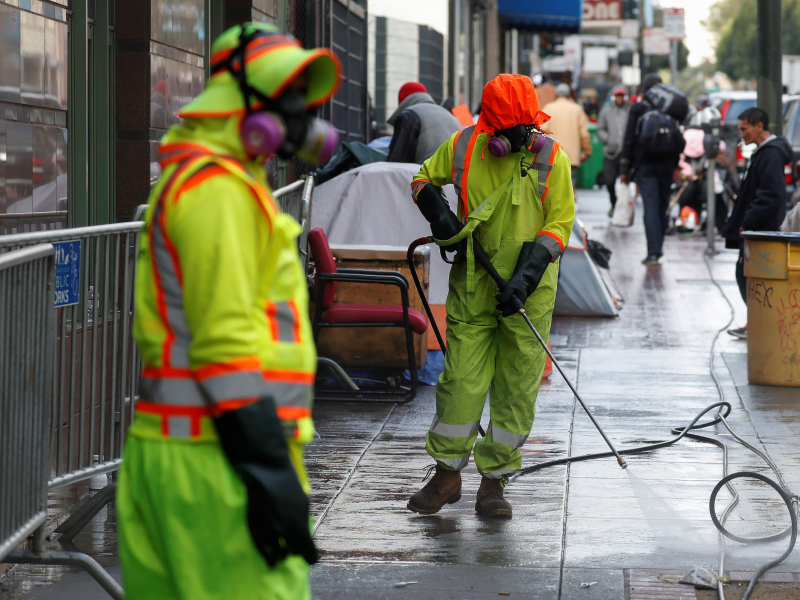
California's Santa Clara County found via autopsies that three people who died in their homes on February 6, February 17, and March 6, tested positive for the coronavirus.
Before these cases were identified, officials thought that a fatality reported in Washington state on February 29 was the earliest US death from the coronavirus.
February 7: Wuhan doctor and coronavirus whistleblower Li Wenliang died. At the onset of the outbreak, Li warned some of his contacts from medical school about a new virus but was reprimanded by authorities and forced to sign a letter saying he made "false comments."

The Wuhan doctor died little more than a month after he sent out the warning message to other doctors, describing a cluster of patients with worrisome pneumonia-like symptoms at the hospital where he worked.
Li caught the coronavirus himself; when he died, he left behind a son and pregnant wife.
After Li's death, Chinese social media was filled with outpourings of grief and anger. Many posts featured a hashtag saying "We want freedom of speech."
February 9: The death toll in China surpassed that of the 2002-2003 severe acute respiratory syndrome (SARS) epidemic, which killed about 774 people globally.
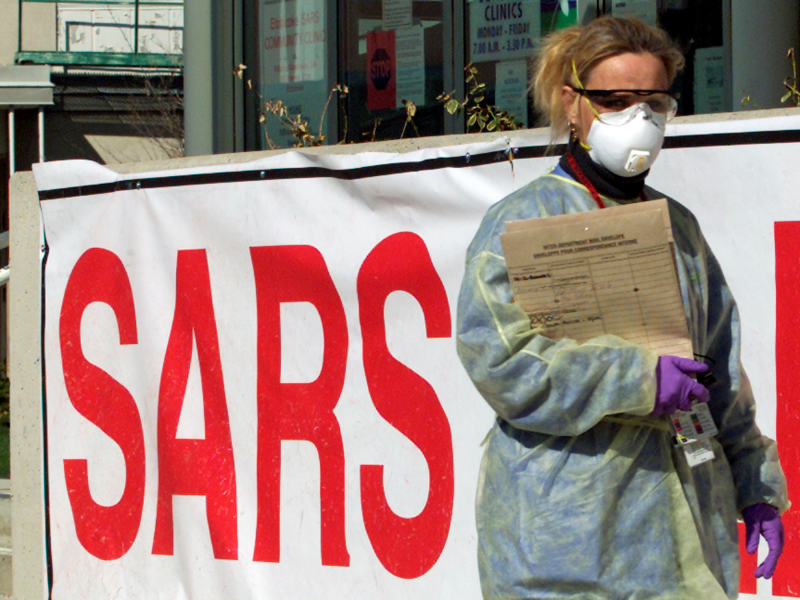
Both SARS and the new coronavirus come from the same family of viruses, and they share 80% of their genetic codes.
SARS emerged in Guangdong and infected 8,098 people globally over the course of eight months from 2002-2003. Just a month after the first confirmed case of the novel coronavirus, the total global case count surpassed that of SARS. On February 9, the death toll from COVID-19 in China alone exceeded the total number of people killed worldwide by SARS.
February 11: The WHO announced that the disease caused by the new coronavirus would be called COVID-19.

"We had to find a name that did not refer to a geographical location, an animal, an individual, or group of people," WHO director-general, Tedros Adhanom Ghebreyesus, said in a press briefing.
WHO also wanted a name that was "pronounceable and related to the disease," he added.
February 12: Coronavirus cases started to spike in South Korea.
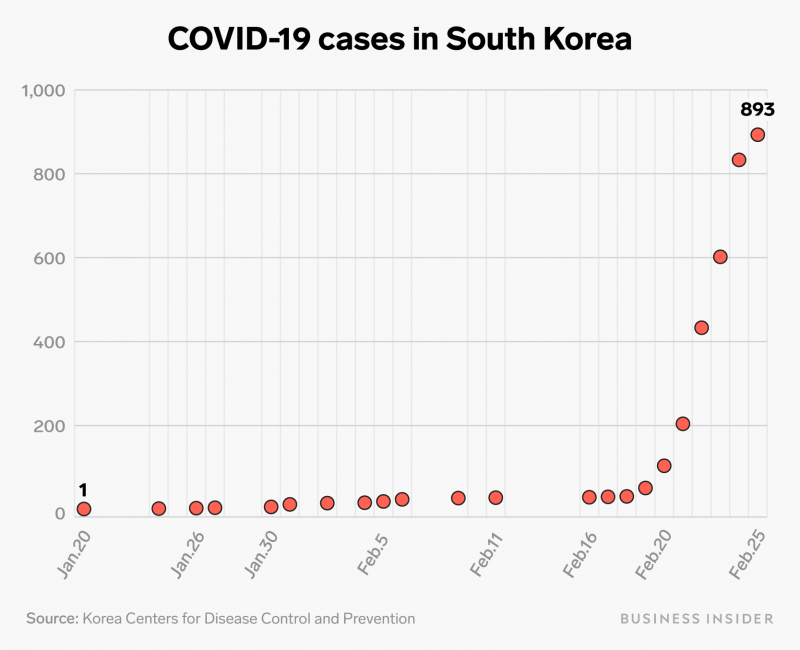
As China's daily number of new cases began to stabilize, South Korea's began to soar.
The Korean CDC believes that a 61-year-old female member of the controversial Shincheonji Church of Jesus triggered a "superspreader" event at the church's Daegu branch. The woman had come into contact with more than 1,000 churchgoers at several tightly packed services.
On February 23, South Korean president Moon Jae-in warned that the country faced "a grave turning point" in its efforts to contain the outbreak.
However, South Korea implemented widespread testing and contact tracing. The country soon began conducting as many as 10,000 tests per day and built drive-through testing clinics. As of May 22, South Korea has tested more than 802,418 people and confirmed about 11,100 cases.
February 14: A Chinese tourist who tested positive for the virus died in France, becoming Europe's first death tied to the outbreak.

February 19: A coronavirus outbreak began in Iran.

Iran's schools and universities closed February 23, along with many movie theaters and cultural centers. Neighboring countries like Turkey and Pakistan also closed their borders with Iran. Iraq has also imposed an entry ban on any incoming Iranians.
The country released 54,000 prisoners to prevent outbreaks in its prisons.
According to Reuters, 23 members of Iran's parliament - 8% - got the coronavirus. Fatemeh Rahbar, a conservative lawmaker from Tehran, died.
The Iranian government has been accused of covering up the scale of the coronavirus and censoring the media's reporting on the outbreak. It also threatened the death penalty to those who hoard necessary materials or equipment.
As of May 22, the country has over 131,600 reported COVID-19 cases and over 7,300 deaths.
February 21: COVID-19 cases spiked in Italy.
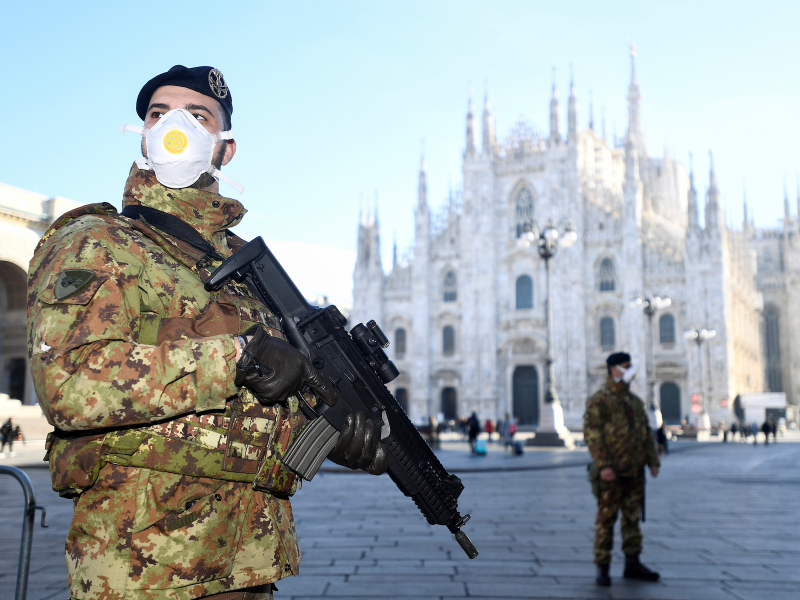
The country's coronavirus caseload skyrocketed at the end of February - more than 110,000 people were infected at the time. Italy overtook China as the country with the most cases at the end of March, but Brazil, Russia, Spain, the UK, and the US have since surpassed it.
As of May 22, Italy has over 228,000 cases and 32,000 deaths.
February 29-March 19: Nearly all US states declared a state of emergency.
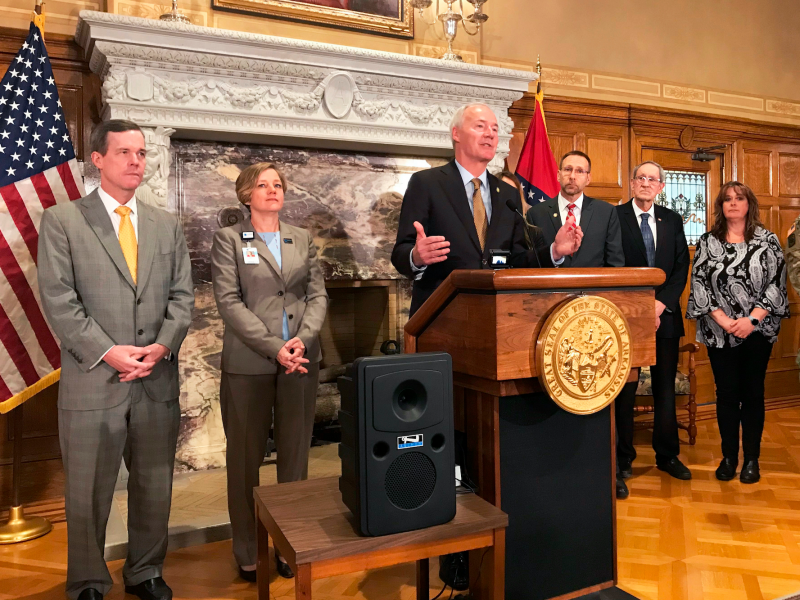
The strategic announcements can help states activate emergency response plans and spend more money on preparedness actions. Such declarations also authorize leaders to use funds to deploy additional personnel, buy equipment, and prepare stockpiles.
March 3: Coronavirus cases began to sharply increase in Spain, marking the start of its outbreak.
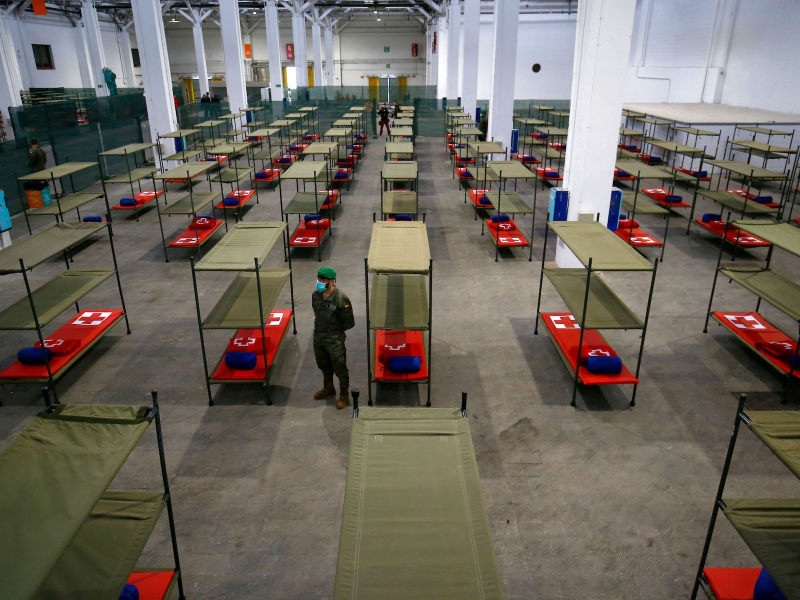
Spain passed 100,000 confirmed cases of COVID-19 on March 31. The country also had one of the world's highest death counts as of May 22: nearly 28,000.
March 9: Italy placed all 60 million of its residents on lockdown.

The country initially saw two regions near Milan and Venice in the north become hotspots for cases, so locked down almost a dozen towns in them on February 23.
The country's leadership shut down schools, museums, and public venues, and discouraged large gatherings.
Then on March 9, the government expanded the coronavirus restriction zone to encompass the entire nation. All stores closed, save for grocery markets and pharmacies.
March 11: The WHO declared the outbreak a pandemic.

The WHO made the designation based on the geographic spread of the disease, the severity of illnesses it causes, and its effects on society.
"Pandemic is not a word to use lightly or carelessly," WHO's director-general, Tedros Adhanom Ghebreyesus, told reporters at a press briefing announcing the determination.
March 11: President Trump banned travel from 26 European countries.
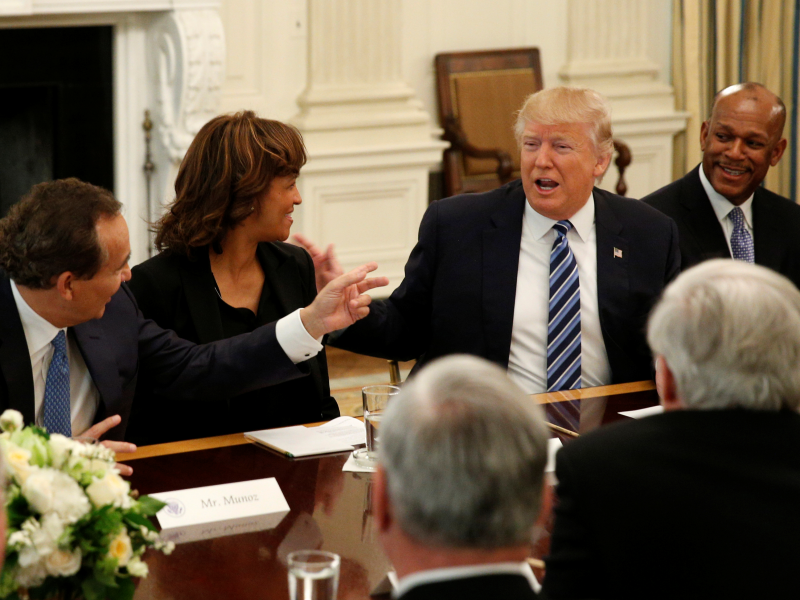
The ban went into effect on March 13. The UK and Ireland were later added. The ban does not stop US citizens and some other groups from entering the country from Europe.
March 13: Trump declared a national emergency in the US.
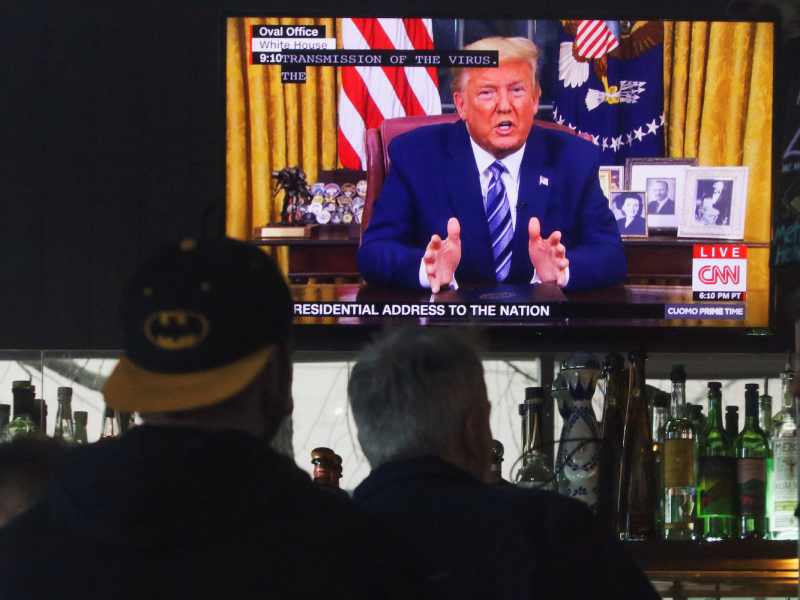
The declaration triggered the Stafford Act and allowed for more federal aid to states and municipalities. Trump said his decision would open up access to $50 billion in aid money for US states and territories.
Meanwhile, Congress passed a roughly $2 trillion stimulus package to boost the economy.
March 19: China reported no new locally spread infections for the first time since the pandemic began.

March 23: New York City became the epicenter of the coronavirus epidemic in the US.
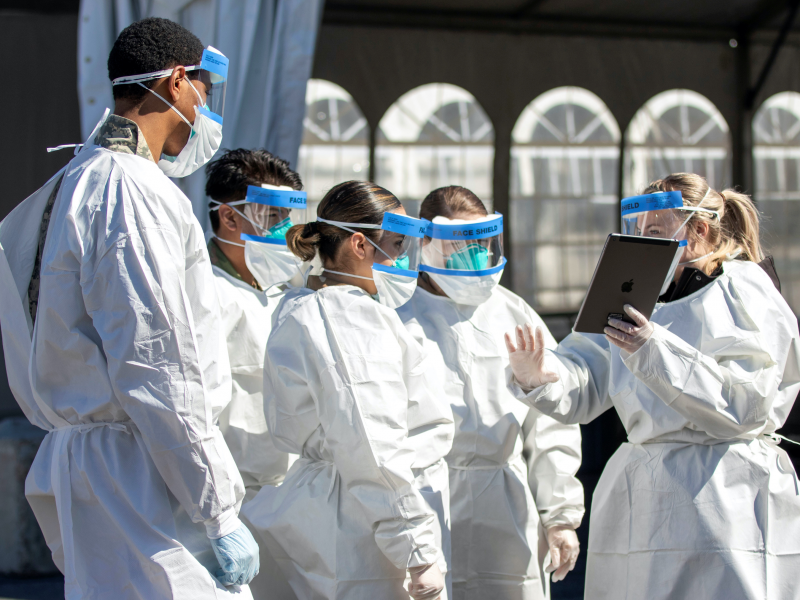
New York Gov. Andrew Cuomo said on March 21 that - following a dramatic increase in processing COVID-19 tests - the state was reckoning with a significant rise in the number of coronavirus cases.
As of May 22, the state has confirmed over 358,000 cases and more than 23,000 deaths.
March 26: The US became the world leader in confirmed cases with 82,404, surpassing China's 81,782 and Italy's 80,589.
March 31: More than one-third of humanity was under some form of lockdown.

India, China, France, Italy, New Zealand, Poland, and the UK implemented the world's largest and most restrictive mass quarantines.
April 2: The world passed 1 million COVID-19 infections.
April 7: Roughly 95% of all Americans were under some form of lockdown as a result of state, county, or city orders.
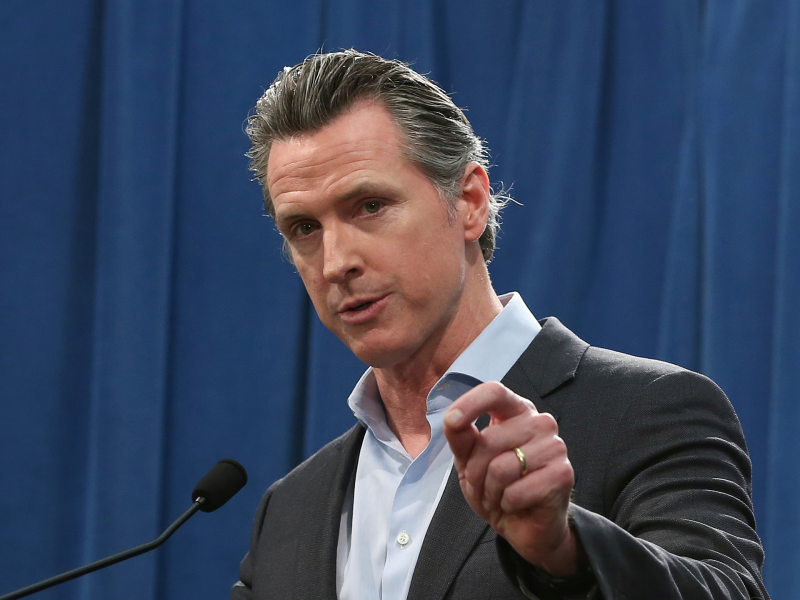
Governors in 42 states took the unprecedented steps of issuing "stay at home" orders by the end of March, affecting a total of 308 million people, or about 95% of the US population.
April 10: The global death toll surpassed 100,000.
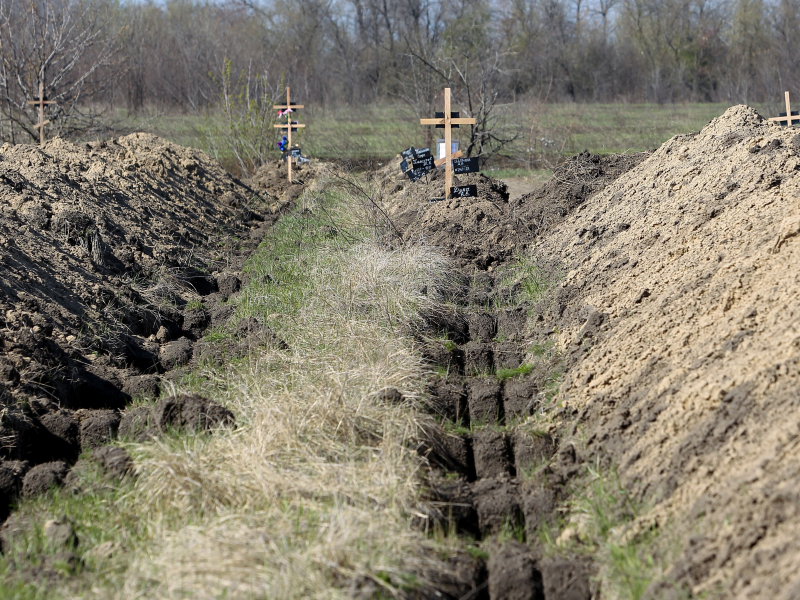
April 14: President Trump ordered a halt on $400 million in US funding for the World Health Organization.
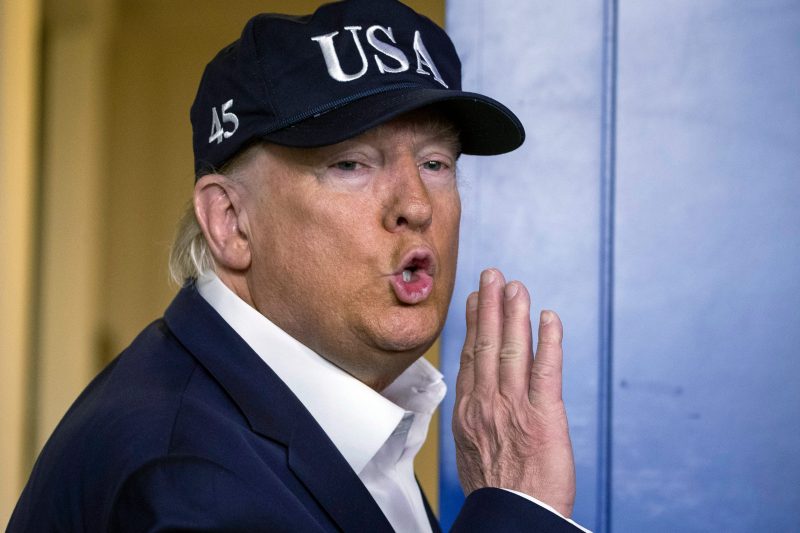
During a White House press conference, Trump blamed the WHO for "severely mismanaging and covering up the spread of the coronavirus," and said the US would end its annual contribution - which was $418 million in 2018 - to the organization.
"The WHO failed to adequately obtain, vet, and share information in a timely and transparent fashion," Trump said.
Jack Chow, a former WHO assistant director-general, told Business Insider that cutting WHO funding would be a "profound mistake." He said the move may mean "the pandemic could last for many more months, even years, longer, and could even become permanent among human populations."
May 11: Many countries, including Spain, Iran, Italy, Denmark, Israel, Germany, New Zealand, and Thailand, began to ease lockdown restrictions.

May 21: The number of global COVID-19 cases surpassed 5 million.
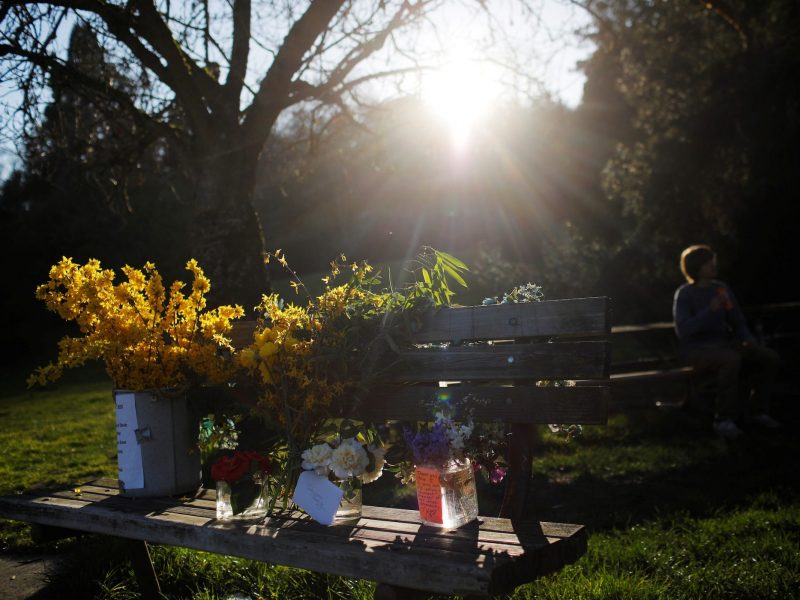
May 22: Globally, authorities reported roughly 5.2 million confirmed cases of COVID-19, with about 2.9 million being active and ongoing cases, roughly 2 million recoveries, and 335,000 deaths.

This story was originally published on March 19 and has been updated with new information.
